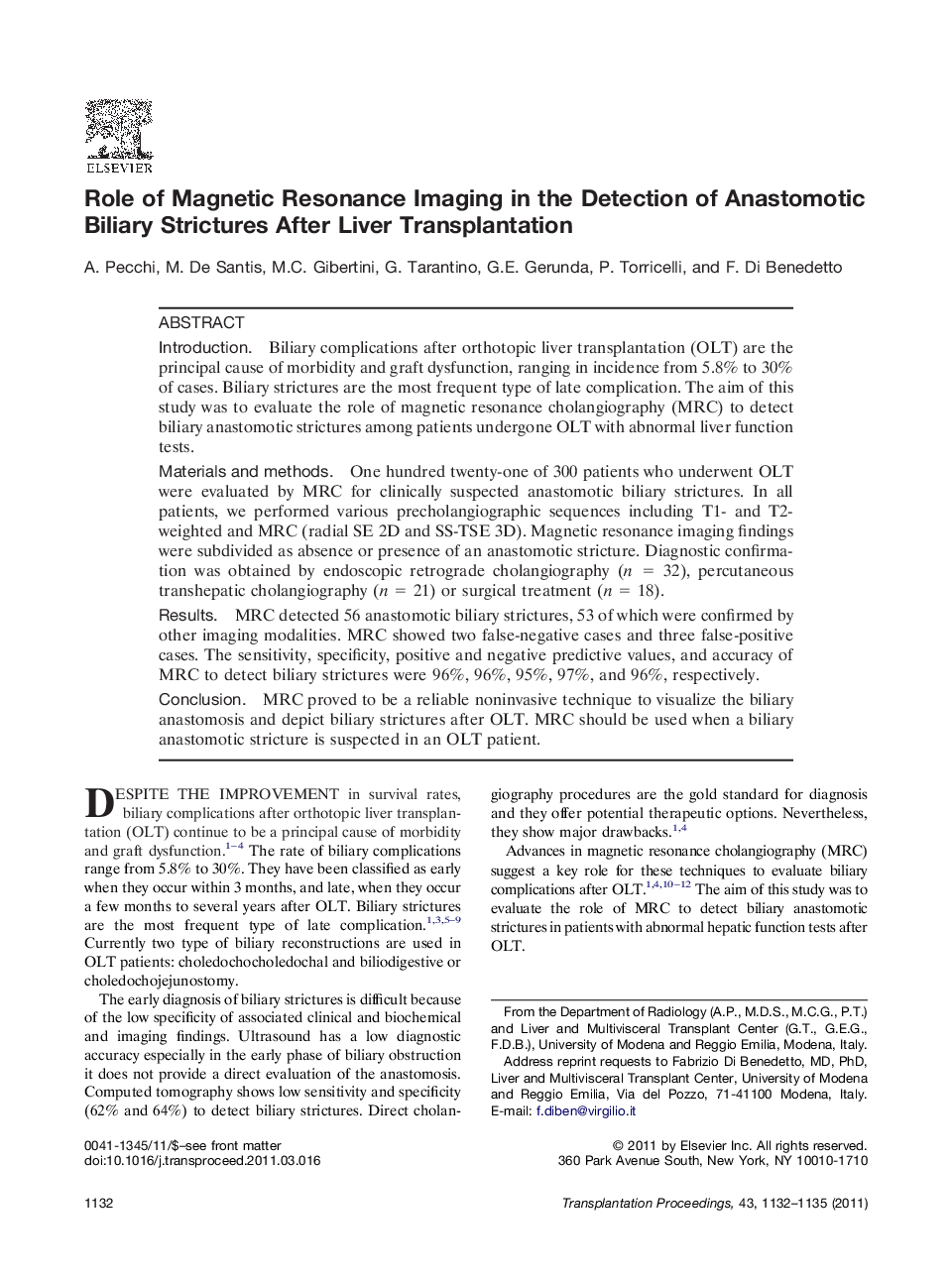| Article ID | Journal | Published Year | Pages | File Type |
|---|---|---|---|---|
| 6249508 | Transplantation Proceedings | 2011 | 4 Pages |
IntroductionBiliary complications after orthotopic liver transplantation (OLT) are the principal cause of morbidity and graft dysfunction, ranging in incidence from 5.8% to 30% of cases. Biliary strictures are the most frequent type of late complication. The aim of this study was to evaluate the role of magnetic resonance cholangiography (MRC) to detect biliary anastomotic strictures among patients undergone OLT with abnormal liver function tests.Materials and methodsOne hundred twenty-one of 300 patients who underwent OLT were evaluated by MRC for clinically suspected anastomotic biliary strictures. In all patients, we performed various precholangiographic sequences including T1- and T2-weighted and MRC (radial SE 2D and SS-TSE 3D). Magnetic resonance imaging findings were subdivided as absence or presence of an anastomotic stricture. Diagnostic confirmation was obtained by endoscopic retrograde cholangiography (n = 32), percutaneous transhepatic cholangiography (n = 21) or surgical treatment (n = 18).ResultsMRC detected 56 anastomotic biliary strictures, 53 of which were confirmed by other imaging modalities. MRC showed two false-negative cases and three false-positive cases. The sensitivity, specificity, positive and negative predictive values, and accuracy of MRC to detect biliary strictures were 96%, 96%, 95%, 97%, and 96%, respectively.ConclusionMRC proved to be a reliable noninvasive technique to visualize the biliary anastomosis and depict biliary strictures after OLT. MRC should be used when a biliary anastomotic stricture is suspected in an OLT patient.
